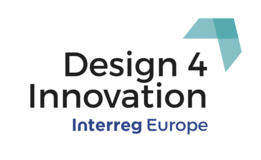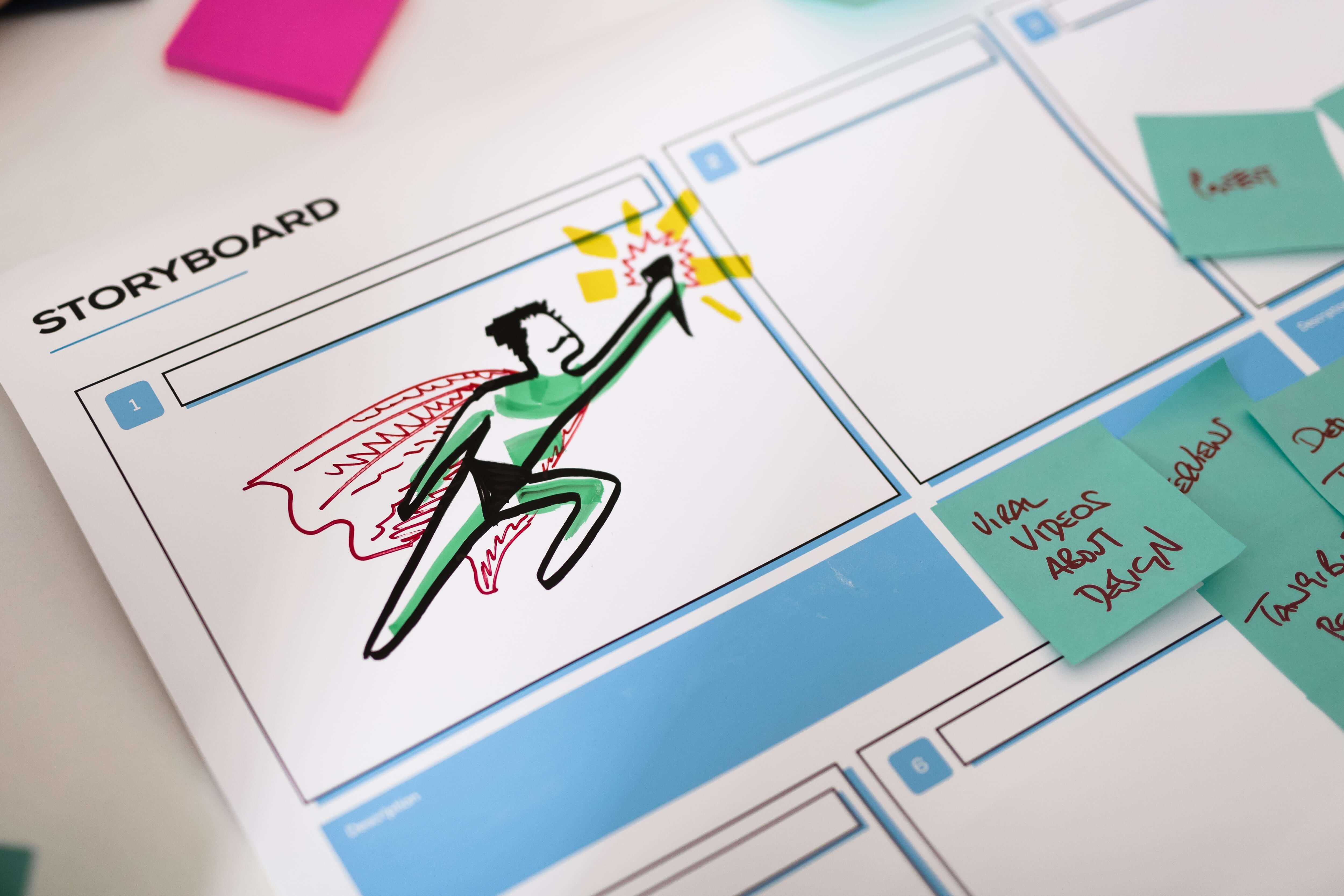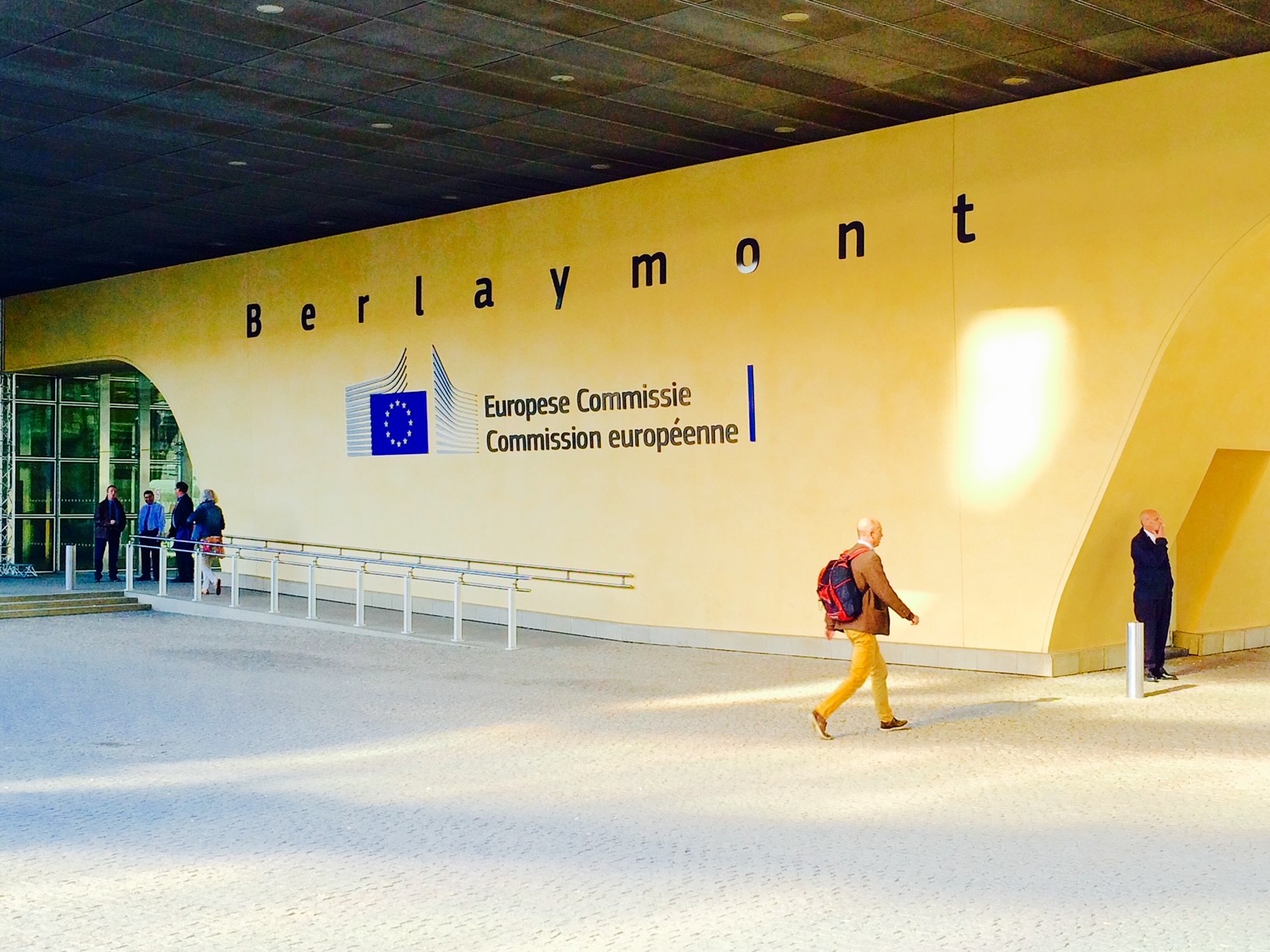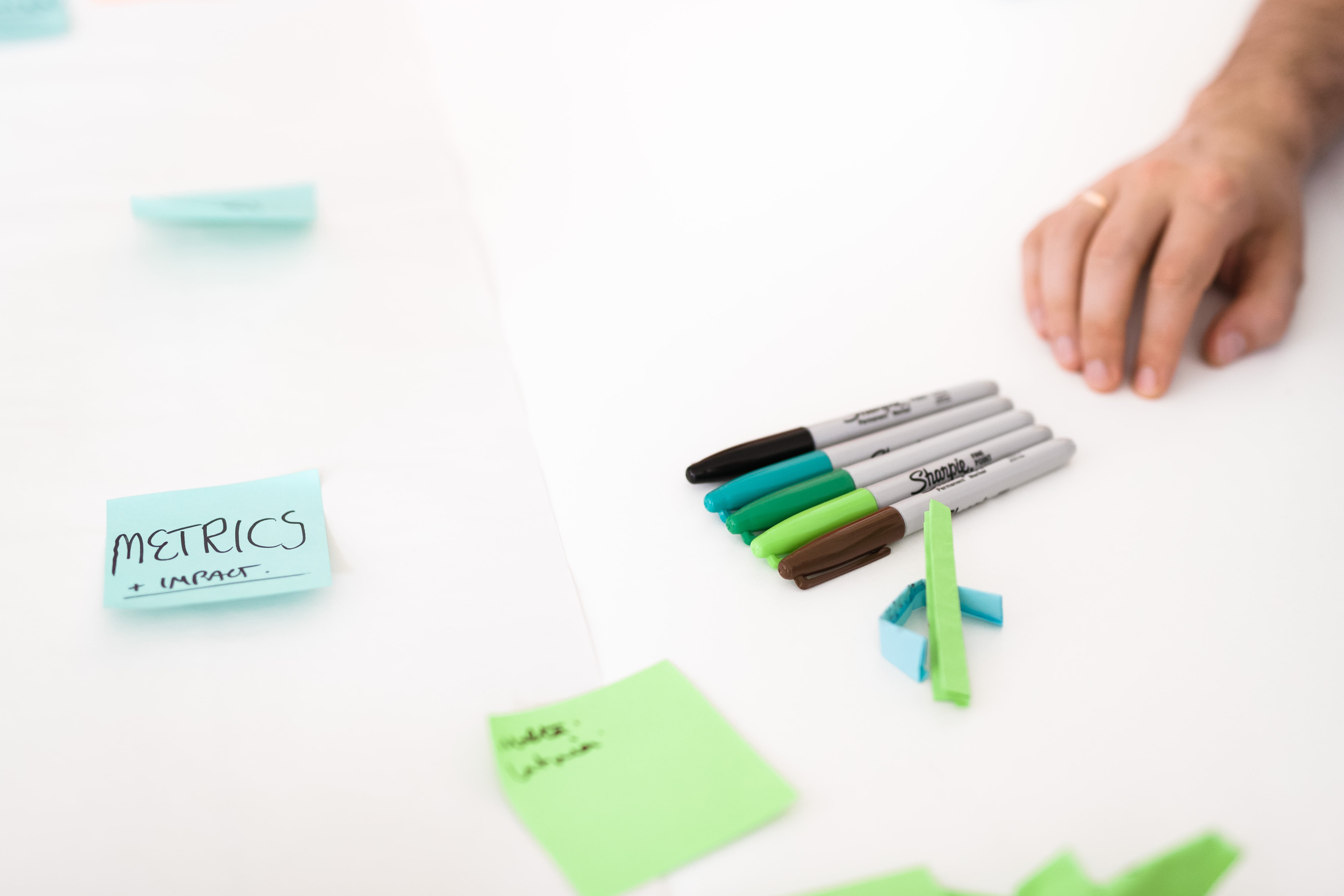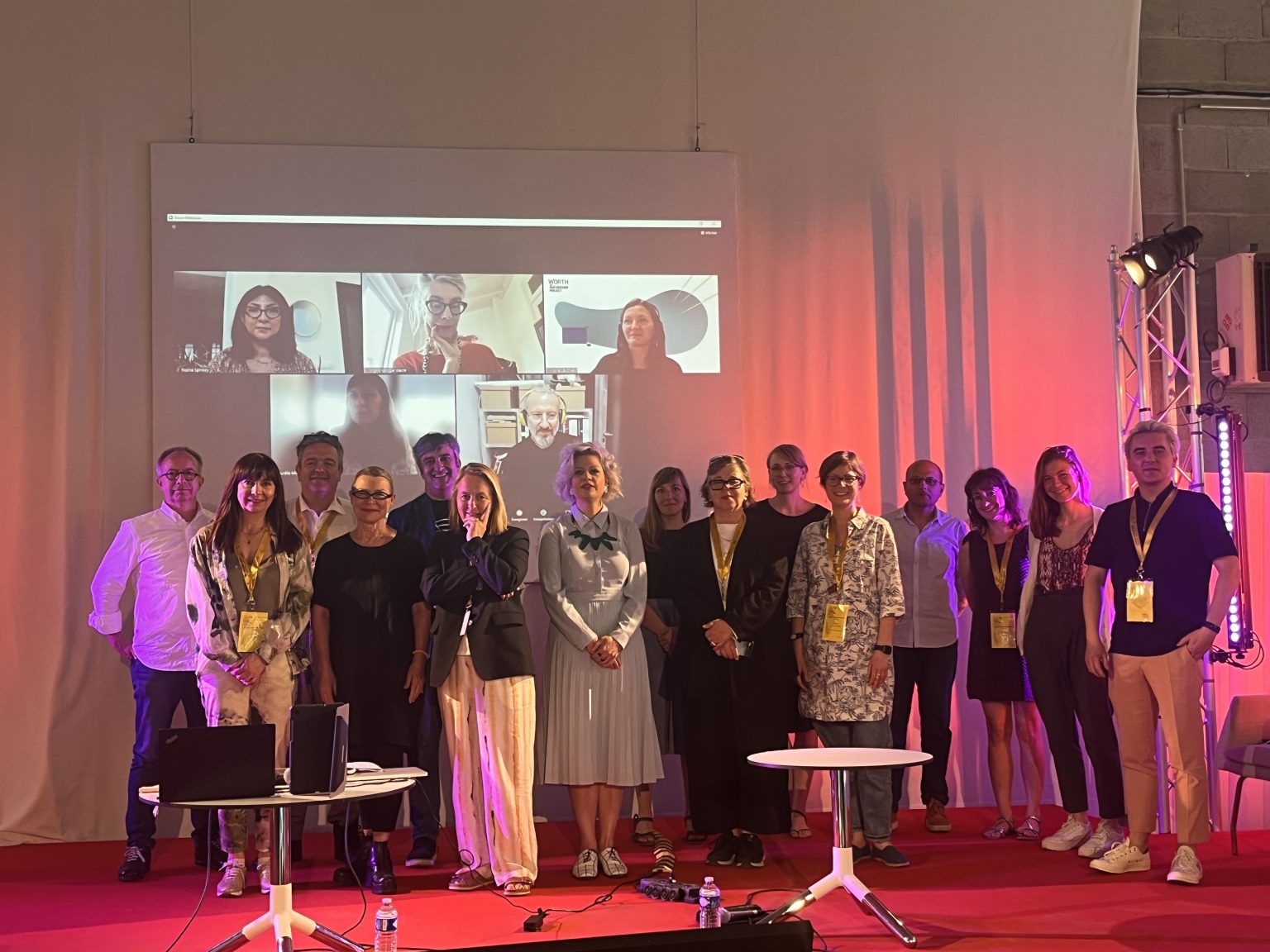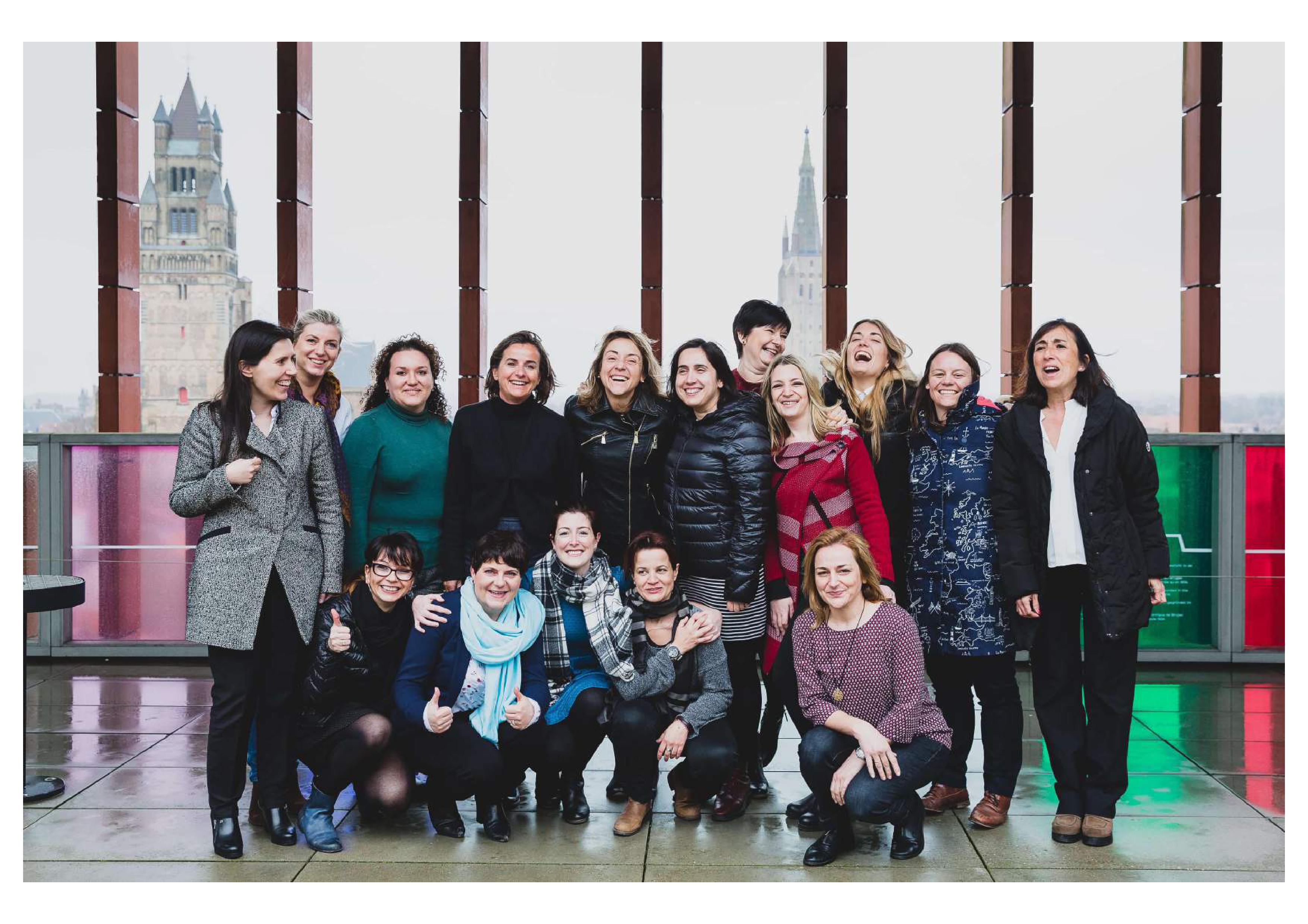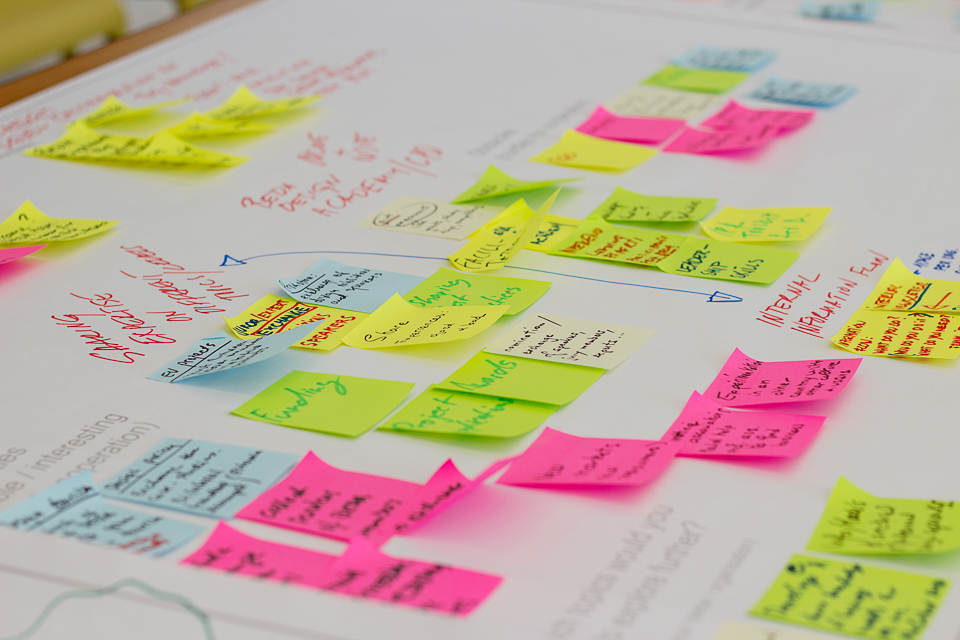You can read the first part of this article here.
- Training & Platforms – training is a most common way to build capacity. There is a commercial training offer in design tools and approaches, as well as some funded programmes or open workshops as part of various events and projects. To start design training you need to first build awareness among staff that this knowledge is important and choose experienced and trustworthy facilitators who can effectively pass relevant information and skills. Training should be interactive and collaborative to demonstrate the real value of design, but also teach how to communicate the benefits of design to business without using the jargon. Depending on your goals, the training could be a short taster session to provide a general understanding of design as a method of innovation beyond aesthetics or an in-depth ‘train-the-trainer’ learning to be able to deliver workshops to businesses as part of support offer. At this table also building capacity through different kinds of platforms, such as for instance networks, clusters or online communities was discussed. Although, generally believed to be helpful in finding the knowledge and expertise needed, the proliferation of platforms sometimes makes it confusing to identify the right one. Some platforms are also created as part of project and lack legacy beyond the funding period. Knowledge sharing platforms work best if they involve a mix of dedicated members with complementary expertise and have a strong driving force behind it.

- Improving support offer using design method & Linking business support to design centres – building or improving business support offer through design process can be a great capacity building activity for business support organisation. By being involved in the process the staff experiences for themselves the benefits of taking the user-centred approach, right from exploring enterprises’ needs regarding support, through developing a consistent and easy to understand and complete grant application journey, and clear rules to comply with and report on. Such approach can lead to better alignment to business needs, streamlining of the support process and as a result to greater support success rate and efficiencies. This approach is still quite novel and more examples of good practices are needed to encourage business support organisations to take this route. There are also financial and administrative barriers that need to be tackled to adopt design process in development of support schemes. Another capacity building method discussed at this table was linking business support with design centres. While they are repositories of design expertise and usually well recognized by creative sector, they might not be seen as business partners or taken into account by a business thinking of launching new product or service. There is lack of knowledge in government and among SMEs on how design centres can support business. Therefore, design centres should work closely with business support organisations to tie up and coordinate the services between them and build on the synergetic expertise. They could act as a broker between design, policy and sector needs, ensuring that the support offer is fit for purpose and comprehensive.

Based on those discussions, the partners were asked to propose a new tool, programme or initiative that would help business support organisations better promote and explain design to companies. We use design tools throughout our project, and this time we learnt about storyboarding technique. “It is used for both visualisation of ideas and their processes but also as a method of experimentation with concepts”, said Jo Ward, designer at PDR, who explained how to use storyboarding and even gave a short drawing lessons. The level of drawing was as impressive as the ideas developed by the teams. The concepts included a witty video campaign tackling the issue of both business and design jargons; matchmaking platform for businesses and designers, and embedding creative approaches within business support organisations for more engaging and fun services.


